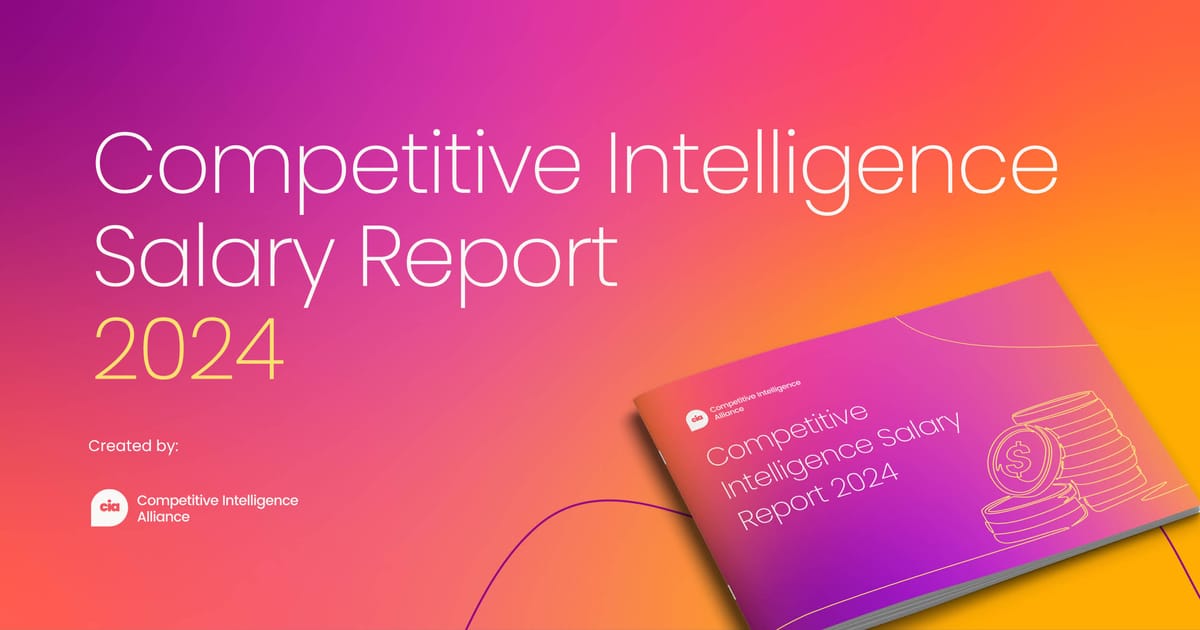The job market is always on the go, with technological developments, economic changes, and employer expectations always undergoing a change. Job market seems like a roller coaster for job seekers, full of ups and downs that affect your career a lot.
The competition for the same positions is so fierce that having a clear job search strategy is very important.
Win/loss analysis is a viable tool you might want to investigate. And while it’s often talked about in the world of sales and marketing, it can really inform you on what’s working and not working in your job search, and give you the insight you need to get to the next stage.
Labor market analysis: Opportunities and challenges
The strategy of job searching
In today’s job market, simply applying for jobs isn't enough—you need a solid strategy to stand out. With so many candidates and various ways to apply, it’s essential to find a way to set yourself apart from the rest. A thoughtful approach can make all the difference in how hiring managers see you.
For instance, the 2024 Work Trend Index from Microsoft and LinkedIn highlights the increasing importance of AI skills in job applications.
With 75% of knowledge workers now using AI tools, job seekers who develop these skills are significantly more attractive to employers. Notably, two-thirds of leaders (66%) wouldn’t hire someone without AI skills, emphasizing the need for candidates to adapt to this evolving landscape.
Beside this, a successful job search strategy should incorporate several key components:
- Market research: Find out which industries and roles are sought after right now. According to the World Economic Forum, many jobs will be created in technology and healthcare, thus you need to tailor your search to these high demand fields.
- Personal branding: Setting yourself apart with a strong personal brand is possible. Polished LinkedIn profile, organized resume that tells the world who you are and what you can do are part of this.
- Skills development: Make sure you are working to identify and pursue any other skills or certifications which will help to give you the edge in terms of employability.

Why evaluate successes and failures?
One of the best ways to improve your job search strategy is to take a look back at what went well and what didn’t. Thinking about how some applications got you an interview or job offer (those are your "wins") and some didn’t (the "losses") can help you gain a clearer picture of your job search.
This kind of reflection will help you to know what’s working and what’s not. Let’s say that when you see that your applications for some jobs get more responses, you might consider applying for different roles of the same nature.
On the other hand, if you continually fail to find jobs in certain fields, it’s an opportunity to find out what might be lacking—your skills, perhaps, or your presentation in your resume.
You can also evaluate your successes and failures and that gives you confidence. Winning recognition reminds you of your strength, while looking at your losses help you learn and grow. It transforms the job search from a stressful exercise into a chance to get better.
Trends in the job market
Being aware of what is going on in the labor market will help you with your job search strategy. Knowing this not only makes it easier to identify some potential job opportunities, but also gives you a sense of what employers are really looking for as far as skills and experiences.
The growing demand for tech related roles
Technology related roles are in high demand with predictions of millions of new technology jobs being created around the world in the near future. The reason behind this growth is the accelerating use of technology in all sectors.
If you are a job seeker, the focus should be on learning and relearning new skills like software development, data analysis and cybersecurity.
The employment for software developers is expected to grow by 25% from 2022 to 2032, indicating the criticality of this sector, according to the U.S. Bureau of Labor Statistics.
The rise of remote work
A shift to remote work has invited use of greater flexibility and freedom in how and where one works as a job seeker. You can find work-at-home opportunities that are now being offered by many employers who are now offering flexible arrangements and that can be applied by a wider range of candidates.
But this has meant that it’s easier for people to search for roles outside of their immediate location, which opens up new job avenues in tech, customer service and marketing.
Having this knowledge, you are able to adjust your job search strategy and focus more on the chances that are important and respond to the job market of today.
Sectors actively hiring
- Technology sector: Cybersecurity roles, such as information security analysts, are experiencing rapid growth. According to the U.S. Bureau of Labor Statistics (BLS), employment for information security analysts is projected to grow by 33% from 2020 to 2030 due to the increasing number of cyberattacks and the need for organizations to secure their networks and data.
- Healthcare: The healthcare sector is also witnessing significant growth, particularly for roles such as nursing and telehealth. The BLS anticipates a 31% increase in nurse practitioner jobs over the next decade, driven by an aging population and a growing focus on preventive care.
- E-commerce: The e-commerce industry has seen significant growth, with online sales reaching record levels during the COVID-19 pandemic. The rise of online shopping has spurred demand for jobs in logistics, digital marketing, and customer service.

How win/loss analysis works in job searching
Overview of the process
The use of win/loss analysis in your job search can greatly improve your approach because it gives you tangible information about how you’re doing. Follow these steps to effectively integrate this analytical approach:
1. Define wins and losses
Before diving into the ins and outs of a game you must first understand the rules: what is a win and what is a loss when you’re looking for a job? In this case a “win” could range from getting an interview, an offer or even a favorable response from the employer.
On the other hand, a “loss” might entail not getting past the application stage or after getting an interview and not being hired. Determining these definitions will assist in structuring your thinking and help you gain a better perspective on the outcomes experienced in the process.
2. Gather feedback
It is equally important to gather feedback, thus enabling you to gather details concerning factors contributing towards job search results.
It is recommended that after every interview you have done for the given assignment, you should take a step further and write a thank you note. In these notes, think about asking for interview feedback politely.
Also, use other online professional relationship forums such as LinkedIn Box… other contacts that may have info about how the hiring process or the company operates.
Participation in such discussions can be helpful where you get information that will guide your subsequent applications.
3. Analyze key metrics
By tracking certain metrics, you can examine your job search efforts from start to finish. Focus on the following key metrics:
Number of applications: Track with precision how many job applications you submit within a certain period. It will let you know your general activity in the job market.
Interviews secured: Check how many interviews you get from your applications. This metric helps you determine how your resume and cover letter attracts employer interest.
Job offers received: Record what percentage of job offers you receive compared to how many applications you send. This will be your metric for evaluating whether you are getting from interviews to offers.
Time spent: Determine your duration on each stage of the application procedure from writing a resume to preparing for the interview. Knowing where your time goes can help you know where you can improve.
Job searching: How to increase your chances of success
Analyzing each phase of the job search process
Resume submission
Your resume often makes the first impression. To evaluate its effectiveness:
- Keyword optimization: For each application, create your resume around keywords from the job description. Resumes often match keywords that Applicant Tracking Systems (ATS) use as filters.
- Design and clarity: Be sure your resume is readable. The layout is straightforward, clean and easy to read with main headings and bullet points for hiring managers to quickly read your profile and find out what you’re all about.
Interview process
It is very important in the interview stage as you make an impression. Consider the following:
- Preparation and research: Know the company culture and what role is all about.
- Feedback utilization: Reflecting on the feedback you got after the interview, then. Take this information forward to do better in future interviews. This iterative approach can be good.

Improving your strategy
Adapting tactics for success
Keep investing in you, by consistently learning and growing your skills. Rapidly changing job market, keeping yourself updated is what distinguishes you.
- Seek continuous learning: You attend workshops, webinars, and online courses so that you can learn skills related to your target industry. High demand areas such as digital marketing, coding and project management are offered in courses on platforms like Coursera and Udemy.
- Professional certifications: Get certified in the field you’re in. It can also show employers that you’re serious about professional growth and add some credibility to your resume.
- Networking: Start building relationships in your industry. Become more active in professional associations, and local meetups.
What to do if you are just starting your job search
Tailored applications: And then make all that specific to the position you’re applying for, including your resume and your cover letter. With this, you’ll let the employers know that you’re quite interested in the role and stand out.
Best practices for adapting to market conditions: To keep abreast of industry trends so you know what and how to look for. If you want to know what employers are looking for, use resources like the BLS, industry blogs and job market reports.
Apply win/loss analysis early: If you’re just starting out, now, keep track of how many applications you apply to, how many interviews (or ones you missed) you have, and how much feedback (or none). It’s a foundational practice that when executed properly will help you lay a strategic foundation from the start.
Conclusion
Overall, we can conclude that win/loss analysis can help to build a better job search strategy, no matter what your situation is, in no particular order.
The best bet is to learn market trends, work through what worked well and what didn’t quite write, and network with other people.
The job market may be tough but it sure can get competitive but you can get through by following a strategic approach and continuous improvement mindset.
If you haven't already, download your free copy of our Competitive Intelligence Salary Report, which exams correlations and discrepancies between pay and factors like gender, seniority, and certifications - and more.






.png?v=0501614a4a)